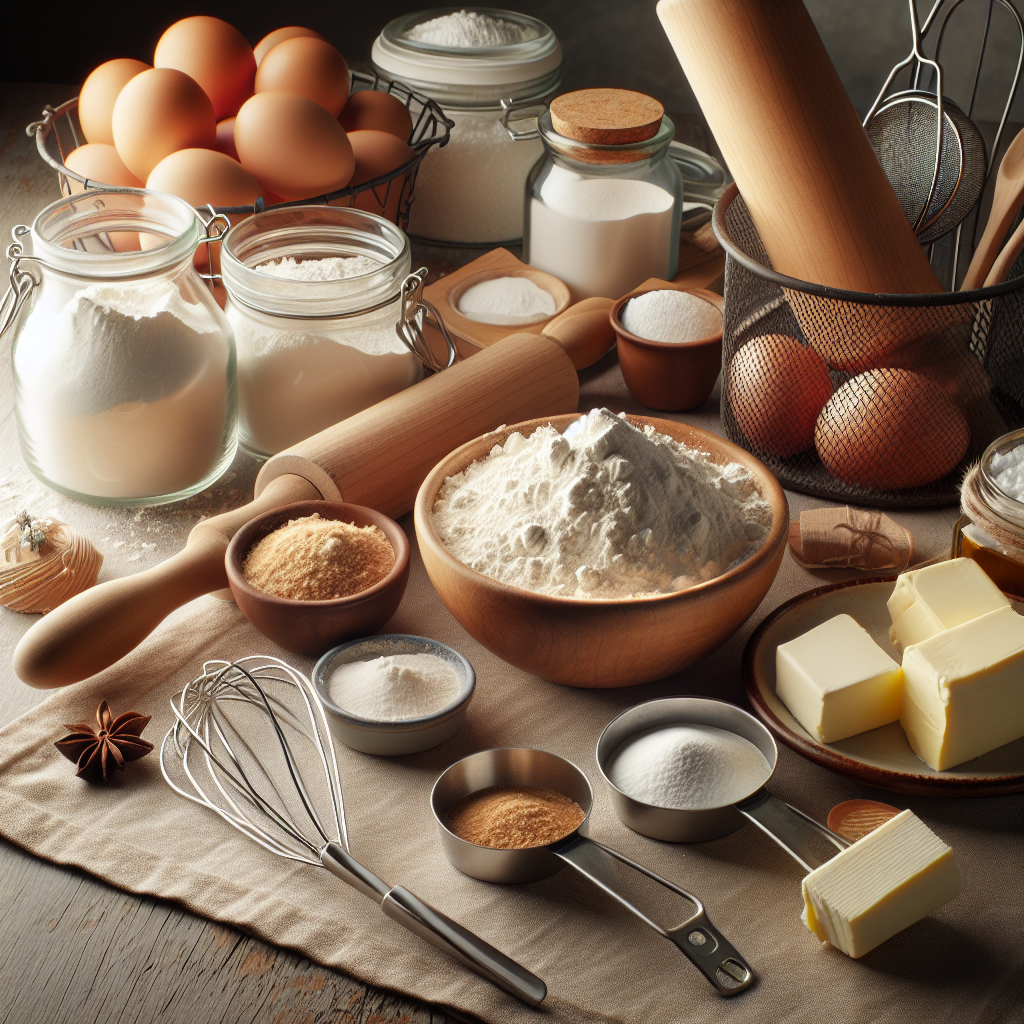1. Baking powder: A leavening agent made from a combination of baking soda, cream of tartar, and cornstarch. It reacts with liquid and acidic ingredients in a recipe to produce carbon dioxide gas, which helps baked goods rise.
2. Baking soda: Another leavening agent that requires an acidic ingredient in a recipe to react and produce carbon dioxide gas. Baking soda is often used in recipes that call for acidic ingredients like buttermilk or vinegar.
3. Cream: To beat together ingredients like butter and sugar until smooth and fluffy. This is often done at the beginning of a recipe to incorporate air into the mixture, which helps baked goods rise.
4. Fold: To gently mix ingredients together using a spatula or whisk in a gentle, circular motion. This technique is often used when incorporating delicate ingredients like whipped cream or egg whites into a batter.
5. Knead: To work dough with your hands by pressing, folding, and stretching it until it becomes smooth and elastic. This technique is commonly used when making bread and other yeast-based doughs.
6. Proof: To let yeast dough rise before baking. This gives the yeast time to ferment and produce carbon dioxide gas, which helps the dough rise and develop flavor.
7. Sift: To pass dry ingredients like flour or powdered sugar through a sifter or fine-mesh sieve to remove lumps and aerate the ingredients.
8. Whisk: To beat ingredients together using a whisk to incorporate air and create a smooth, uniform mixture. This technique is often used when mixing wet ingredients like eggs and milk.
9. Grease: To coat a baking pan or dish with a thin layer of fat to prevent sticking. This can be done using butter, oil, or cooking spray.
10. Preheat: To heat an oven to the desired temperature before placing food inside to bake. This ensures that the oven is at the proper temperature for baking and helps food cook evenly.
By familiarizing yourself with these common baking terms, you’ll be better equipped to follow recipes and experiment with new baking techniques. So next time you’re in the kitchen, don’t be intimidated by unfamiliar terminology – armed with this glossary, you’ll be baking like a pro in no time!

